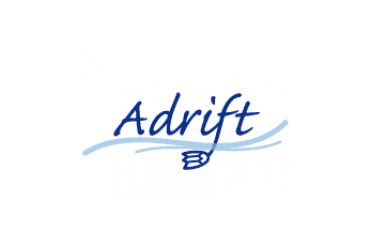
je fais un don

je fais un don

objectif
Rechercher la dose de rivaroxaban permettant une anticoagulation adéquate évaluée par le niveau de génération de thrombine chez des patients souffrant de fibrillation atriale et ayant subi une fermeture d’auricule gauche percutanée réussie
date de réalisation
2017
nombre de patients
84
nombre de centres participants
Étude nationale multicentrique
type de financement
Public (APHP) & Privé (Bayer)
Référence
NCT03273322
Assessment of Dual Antiplatelet Therapy Versus Rivaroxaban In Atrial Fibrillation Patients Treated With Left Atrial Appendage Closure (ADRIFT)
La fermeture d'auricule gauche est une technique récemment développée qui permet de réduire le risque d'AVC chez les patients atteints de fibrillation atriale (FA). Cette technique est utilisée en France pour les patients chez qui ce risque ne peut pas être diminué par l'utilisation classique d'anticoagulant à cause d'un antécédent de saignement important. Néanmoins, pendant une courte durée après la pose, il faut donner à ces patients un traitement empêchant la formation de caillots au niveau de la prothèse. Les usages concernant ce traitement à administrer sont très divers et aucune étude randomisée n'a été réalisée sur ce sujet.
Essai clinique académique randomisé en ouvert, lancé par le Fonds de Dotation ACTION et dont la promotion est réalisée par l'Assistance Publique des Hôpitaux de Paris (AP-HP), ADRIFT a pour objectif la chercher de dose de Rivaroxaban (10 ou 15 mg) permettant une anticoagulation efficace pour ces patients fragiles. Les 2 bras seront comparés au traitement de référence : une combinaison d'aspirine et de clopidogrel sur les évènements thrombotiques (liés à la formation d'un caillot) et hémorragiques.
Data on antithrombotic therapy after Left Atrial Appendage Closure (LAAC) are scarce and no randomized evaluation has been performed to demonstrate what is the best antithrombotic strategy following LAAC. LAAC is classically associated with a 6-week period of anticoagulation with warfarin + aspirin followed by once daily clopidogrel (75 mg) + aspirin (81-325 mg) until the 6 months visit, then aspirin alone is continued indefinitely, as tested in patients without contraindication for anticoagulation in the pivotal Watchman trials. LAAC is mostly used in Europe as an alternative to warfarin anticoagulation when patients have a contraindication to or are unsuitable for warfarin anticoagulation. The classic regimen is not applicable and believed to be too risky in such frail patients. These patients usually receive a regimen of daily clopidogrel + aspirin followed by single antiplatelet therapy (most frequently used treatment). Some patients receive oral anticoagulation without aspirin, including NOAC anticoagulation. Rivaroxaban is a tempting strategy for anticoagulation following LAAC in atrial fibrillation (AF) patients. The dose needs first to be carefully evaluated the trial propose a dose ranging study in patients who have undergone successful LAAC.
The study will evaluate two different Rivaroxaban regimen (10 or 15 mg a day) in comparison to dual antiplatelet therapy (DAPT) (aspirin+clopidogrel : control arm representing standard of care) after successful LAAC. The aim is to investigate whether rivaroxaban could provide correct anticoagulation levels and adequately suppress coagulation activation after LAAC.
The patient will be enrolled after left atrial appendage closure before discharge. The randomization is 1/1/1 between the 3 groups : rivaroxaban 10mg a day, rivaroxaban 15 mg a day and aspirin 75mg + clopidogrel 75 mg a day. At 10 and 90 days, the patients will be sampled for biological assessment : Prothrombin fragments 1+2, Factor Xa inhibitory activity, Russel Viper venom enzyme assay, thrombin anti-thrombin (TAT) complex, D-Dimers, Prothrombin time (Neoplastin) and plasma von Willebrand factor (vWf) Ag level.
After 90 days, the patient will end his/her participation in the trial. Clinical endpoints (death, MI, Stroke, TIA, systemic embolism, extracranial major bleeding or clinically relevant non major bleeding) at 90 days will be assessed by a clinical endpoint committee. Central echographic laboratory will review all 90 days transesophageal echocardiography (TEE) to detect the presence of thrombus or peri-device leak.
The study is open-label. Central laboratory, clinical endpoint committee and echographic core laboratory is blinded to randomization arm.
source clinicaltrials.gov
Publication
Présentation

En cours
En cours
En cours